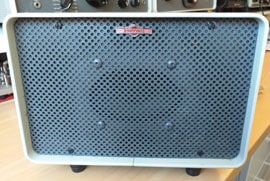Unlike Morse Code prosigns, the following abbreviations are sent with normal letter spacing.
AA – All After (used in traffic handling when requesting a fill)
AB – All Before (used in traffic handling when requesting a fill)
ABT – About
ADR – Address
AGN – Again
ANT – Antenna
BCI – Broadcast interference
BCNU – Be seeing you
BK – Break
BN – All Between (used in traffic handling when requesting a fill); Been
BRGDS – Best regards
BTN – Back to Net (Developed for NZ Net, means “I am turning frequency over to Net Control” or “I am returning to net frequency”)
BTR – Better
BUG – Semi-automatic key
B4 – Before
C – Yes; That is correct
CFM – Confirm; I confirm
CK – Check (i.e. the word count in a formal message)
CKT – Circuit
CL – I am closing my station
CLD – Called or could
CLG – Calling
CNT – Can’t
CNX – Cancel or Cancellation
CONDX – Conditions
CORRN – Correction
CQ – Calling any station
CU – See You
CUL – See You later
CUM – Come
CW – Continuous wave
DE – From; This is
DIFF – Difference
DLVD – Delivered
DN – Down
DR – Dear
DX – Distance
EL – Element
ES – And
FB – Fine business, very good
FER – For
FM – From
GA – Go ahead; Good afternoon
GB – Good bye
GE – Good evening
GESS – Guess
GG – Going
GL – Good luck
GM – Good morning
GN – Good night
GND – Ground
GUD – Good
GV – Give
GVG – Giving
HI – The telegraph laugh; High
HPE – Hope
HQ – Headquarters
HR – Here; Hear
HV – Have
HW – How; How do you copy?
II – I will now direct my communication to another station on the frequency
INFO – Info
LID – A poor operator
LNG – Long
LTR – Later; letter
LV – Leave
LVG – Leaving
MILL – Typewriter
MSG – Message
N – No, Incorrect, No More
NCS – Net Control Station
NIL – Nothing
NM – No more (as in “I have no more traffic to send you”)
NR – Number
NW – Now
OB – Old boy
OM – Old man
OP – Operator
OPR – Operator
OT – Old timer
PBL – Preamble
PKG – Package
PSE – Please
PT – Point
PWR – Power
R – Received as transmitted; Are; Decimal point
RC – Ragchew
RCD – Received
RCVR – Receiver
RE – Concerning; Regarding
REF – Refer to; Referring to; Reference
RFI – Radio frequency interference
RIG – Station equipment
RPRT – Report
RPT – Repeat, Report
RSN – Readability, signal strength, noise strength (e.g. “UR RSN 356″>
RST – Readability, signal strength, tone (e.g. “UR RST 359”)
RX – Receive, Receiver
SASE – Self-addressed, stamped envelope
SED – Said
SEZ – Says
SGD – Signed
SIG – Signature; Signal
SINE – Operator’s personal initials or nickname
SKED – Schedule
SRI – Sorry
STN – Station
SU – See you (as in “good bye”)
SUM – Some
SVC – Service; Prefix to a service message
TFC – Traffic
TMW – Tomorrow
TKS – Thanks
TNX – Thanks
TR – Transmit
T/R – Transmit/Receive
TRIX – Tricks
TT – That
TU – Thank you
TVI – Television interference
TX – Transmitter; Transmit
TXT – Text
U – You
UR – Your; You’re
URS – Yours
VFB – Very fine business (excellent)
VY – Very
WA – Word After (used in traffic handling when requesting a fill)
WB – Word Before (used in traffic handling when requesting a fill)
WD – Word
WDS – Words
WID – With
WILCO – Will comply (I will do as you have requested)
WKD – Worked
WKG – Working
WL – Well; Will
WPM – Words per minute
WRD – Word
WUD – Would
WX – Weather
XCVR – Transceiver
XMTR – Transmitter
XTAL – Crystal
XYL – Wife
YL – Young lady
YR – Year
30 – I have no more to send
73 – Best regards
77 – Long live CW
88 – Love and kisses
161 – Best regards to you and your spouse (161 = 73 + 88)
Did we miss any? Please get in touch.
Cut numbers
Only used when the context makes it clear that the letters actually signify numbers.
A – 1
U – 2
V – 3
4 is sent normally
E – 5
6 is sent normally
G – 7
D – 8
N – 9
T – 0 (sometimes sent as a long dash)



